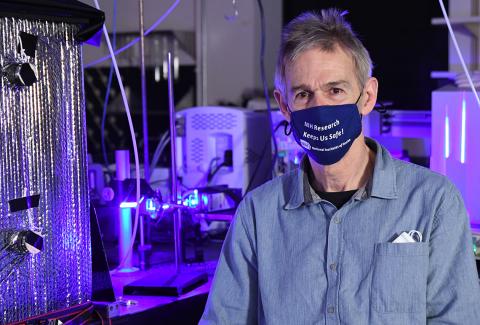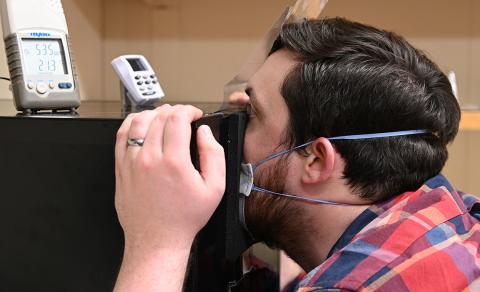Humidity from Masks May Lessen Severity of Covid-19

Research has shown masks help protect the wearers and those around them from Covid-19. Now, NIH investigators have uncovered another potential benefit: the humidity created inside the mask may offer another layer of protection.
The study, led by NIDDK and published in the Biophysical Journal, found that face masks substantially increase the humidity in the air that the mask-wearer breathes in. This higher level of humidity in inhaled air may explain why wearing masks has been linked to lower disease severity in people infected with SARS-CoV-2.
“We found that face masks strongly increase the humidity in inhaled air and propose that the resulting hydration of the respiratory tract could be responsible for the documented finding that links lower Covid-19 disease severity to wearing a mask,” said the study’s lead author, NIH distinguished investigator Dr. Adriaan Bax. “High levels of humidity have been shown to mitigate severity of the flu, and it may be applicable to severity of Covid-19 through a similar mechanism.”
High levels of humidity can limit the spread of a virus to the lungs by promoting mucociliary clearance (MCC), a defense mechanism that removes mucus—and potentially harmful particles within the mucus—from the lungs. High levels of humidity can also bolster the immune system by producing special proteins, called interferons, that fight against viruses. Low levels of humidity have been shown to impair both MCC and the interferon response, which may be one reason why people are likelier to get respiratory infections in cold weather.

Photo: niddk
“This research supports the importance of mask-wearing as a simple, yet effective way to protect the people around us and to protect ourselves from respiratory infection, especially during these winter months when susceptibility to these viruses increases,” said NIDDK director Dr. Griffin Rodgers.
The study tested 4 common types of masks: an N95, a 3-ply disposable surgical mask, a 2-ply cotton-polyester mask and a heavy cotton mask. To measure the level of humidity, researchers had a volunteer breathe into a sealed steel box. When the person wore no mask, the water vapor of the exhaled breath filled the box, leading to a rapid increase in humidity inside the box.
When the person wore a mask, the buildup of humidity inside the box greatly decreased, due to most of the water vapor in the mask becoming condensed and being re-inhaled. To ensure no leakage, the masks were tightly fitted against the volunteer’s face. Measurements were taken at three different air temperatures, ranging from 46 to 98 degrees Fahrenheit.
All four mask types increased the level of humidity of inhaled air, but the humidifying effects were greatest at lower air temperatures. The thick cotton mask led to the most increased level of humidity at all temperatures.
